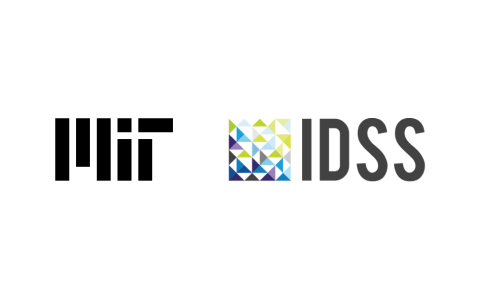- Great Learning
- Free Courses
- Data Science
Earn a certificate & get recognized
Credit Card Fraud Detection
Learn credit card fraud detection from basics in this free online training. Credit card fraud detection course is taught hands-on by experts. Learn about using python & data science to detect credit card fraud. Enroll for free!
Instructor:
Mr. Bharani AkellaCredit Card Fraud Detection
10.3K+ learners enrolled so far
Stand out with an industry-recognized certificate
10,000+ certificates claimed, get yours today!
Get noticed by top recruiters
Share on professional channels
Globally recognised
Land your dream job

Skills you will gain
EDA
Machine Learning
Data Science
Key Highlights
Get free course content
Master in-demand skills & tools
Test your skills with quizzes
About this course
There are innumerable applications of data science. One of those applications is credit card fraud detection. There could be a lot of fraudulent cases on a day-to-day basis that has to be monitored by the banks. Most of the banks employ data science/ml techniques for this purpose. In this course, we shall understand the need for data science and why python is used widely for implementing data science tasks. Finally, we will do a comprehensive case study on credit card fraud detection.
Top global universities, like MIT, the University of Texas at Austin, PES University, Northwestern University, and many more, have formed a collaboration with Great Learning to provide learners with a world-class education through online data science courses. Develop advanced data science and machine learning skills through a comprehensive curriculum. Post completion of the course will award learners a Postgraduate or Degree Certificate in the data science and machine learning course from these highest-rated universities.
Course outline
Introduction to Data Science
This section gives you various examples to help you understand Data Science. It explains how you decide on a place for the vacation, how the weather is predicted, and sales during a particular time in a year using data science.
Python for Data Science
Python is an object-oriented, high-level interpreted language. Python is easy to learn and supports big data, machine learning, and cloud computing. Let's install Python and get started working with different libraries in python.
Credit Card Fraud Detection Project
Credit card fraud detection is the process of identifying purchase attempts that are fraudulent and rejecting them rather than processing them. Using the concept of machine learning and python let us look into the demonstration of the project.
Get access to the complete curriculum once you enroll in the course
Stand out with an industry-recognized certificate
10,000+ certificates claimed, get yours today!
Get noticed by top recruiters
Share on professional channels
Globally recognised
Land your dream job

Credit Card Fraud Detection

1.5 Hours
Beginner
10.3K+ learners enrolled so far
Get free course content
Master in-demand skills & tools
Test your skills with quizzes
Refer and earn
Get learning discounts up to $20
Learner reviews of the Free Courses

4.0

5.0

5.0
What our learners enjoyed the most
Skill & tools
67% of learners found all the desired skills & tools
Our course instructor

Mr. Bharani Akella
Data Scientist
Data Science Expert
Frequently Asked Questions
Will I receive a certificate upon completing this free course?
Is this course free?
How is credit card fraud detected?
One can identify credit card fraud when there is a huge transaction done all of a sudden or several online purchases in a short period.
Why is credit card fraud detected?
Credit card fraud is detected to protect ourselves from unknown frauds happening and not to end up in debts, which we have never done. It is important to pay utmost attention to security in this digital era.
Do credit card frauds get caught?
Yes, some credit card frauds are being caught by banks and the banks are making it difficult for the fraudsters to repeat the same.
How long do you go to jail for credit card fraud?
One who has committed credit card fraud will be jailed for a minimum of 3 years to 15 years.
What is a credit card fraud project?
The credit card fraud project is to use data science to identify the patterns behind how the fraud is happening, to get rid of them in the future, and to protect ourselves from the fraud.
How serious is credit card fraud?
Credit card fraud is a serious white-collar crime, The number of such crimes committed and the number of people they have looted is also taken into consideration, imposing severe charges.
Can they track who used my credit card?
Credit card organizations can follow where your credit card was last utilized, in most of the cases, just once the card is utilized by the individual who took it. The credit card approval or authorization process assists banks to track this. Nonetheless, when law authorization shows up, the individual might have escaped.
Is using someone else credit card fraud?
You can very well use someone's credit card if they permit you to use it. If the owner of the credit card doesn't allow you to use it, then it is a crime or fraud. So, in short, merely using a credit card won't be a fraud or crime but without the permission of the owner, using it to commit crime or fraud will make you liable.
Become a Skilled Professional with Pro Courses
Gain work-ready skills with guided projects, top faculty and AI tools, all at an affordable price.


View Course

Included with Pro+ Subscription

View Course

Included with Pro+ Subscription
.jpg)
View Course

Included with Pro+ Subscription


View Course

Included with Pro+ Subscription


View Course

Included with Pro+ Subscription

View Course

Included with Pro+ Subscription

View Course

Included with Pro+ Subscription

View Course

Included with Pro+ Subscription


View Course

Included with Pro+ Subscription


View Course

Included with Pro+ Subscription


View Course

Included with Pro+ Subscription


View Course

Included with Pro+ Subscription


View Course

Included with Pro+ Subscription




View Course

Included with Pro+ Subscription

View Course

Included with Pro+ Subscription

View Course

Included with Pro+ Subscription

View Course

Included with Pro+ Subscription

View Course

Included with Pro+ Subscription
.png)
View Course

Included with Pro+ Subscription
.jpg)
View Course

Included with Pro+ Subscription

View Course

Included with Pro+ Subscription

View Course

Included with Pro+ Subscription

View Course

Included with Pro+ Subscription
.png)
View Course

Included with Pro+ Subscription

View Course

Included with Pro+ Subscription

View Course

Included with Pro+ Subscription

View Course

Included with Pro+ Subscription


View Course

Included with Pro+ Subscription

View Course

Included with Pro+ Subscription

View Course

Included with Pro+ Subscription
.png)
View Course

Included with Pro+ Subscription
.jpg)
View Course

Included with Pro+ Subscription
.jpeg)
View Course

Included with Pro+ Subscription
.jpg)
View Course

Included with Pro+ Subscription
.jpg)
View Course

Included with Pro+ Subscription

View Course

Included with Pro+ Subscription

View Course

Included with Pro+ Subscription


View Course

Included with Pro+ Subscription


View Course

Included with Pro+ Subscription


View Course

Included with Pro+ Subscription
.png)
View Course

Included with Pro+ Subscription



.png)


View Course

Included with Pro+ Subscription


View Course

Included with Pro+ Subscription

View Course

Included with Pro+ Subscription

View Course

Included with Pro+ Subscription
.png)
View Course

Included with Pro+ Subscription
.png)
View Course

Included with Pro+ Subscription
.png)
View Course

Included with Pro+ Subscription




View Course

Included with Pro+ Subscription

View Course

Included with Pro+ Subscription

View Course

Included with Pro+ Subscription
.jpg)
View Course

Included with Pro+ Subscription

View Course

Included with Pro+ Subscription

View Course

Included with Pro+ Subscription
Popular


View Course

Included with Pro+ Subscription

View Course

Included with Pro+ Subscription
.jpg)
View Course

Included with Pro+ Subscription


View Course

Included with Pro+ Subscription


View Course

Included with Pro+ Subscription

View Course

Included with Pro+ Subscription

View Course

Included with Pro+ Subscription

View Course

Included with Pro+ Subscription
Microsoft Courses


View Course

Included with Pro+ Subscription


View Course

Included with Pro+ Subscription


View Course

Included with Pro+ Subscription


View Course

Included with Pro+ Subscription


View Course

Included with Pro+ Subscription


Data Science & ML


View Course

Included with Pro+ Subscription

View Course

Included with Pro+ Subscription

View Course

Included with Pro+ Subscription

View Course

Included with Pro+ Subscription

View Course

Included with Pro+ Subscription
.png)
View Course

Included with Pro+ Subscription
IT & Software
.jpg)
View Course

Included with Pro+ Subscription

View Course

Included with Pro+ Subscription

View Course

Included with Pro+ Subscription

View Course

Included with Pro+ Subscription
.png)
View Course

Included with Pro+ Subscription

View Course

Included with Pro+ Subscription

View Course

Included with Pro+ Subscription

View Course

Included with Pro+ Subscription


View Course

Included with Pro+ Subscription
 (1).png)
View Course

Included with Pro+ Subscription


View Course

Included with Pro+ Subscription

View Course

Included with Pro+ Subscription


View Course

Included with Pro+ Subscription

View Course

Included with Pro+ Subscription

View Course

Included with Pro+ Subscription
.png)
View Course

Included with Pro+ Subscription
.png)
View Course

Included with Pro+ Subscription

View Course

Included with Pro+ Subscription

View Course

Included with Pro+ Subscription

View Course

Included with Pro+ Subscription

View Course

Included with Pro+ Subscription

View Course

Included with Pro+ Subscription
Management

View Course

Included with Pro+ Subscription

View Course

Included with Pro+ Subscription
.png)
View Course

Included with Pro+ Subscription
.jpg)
View Course

Included with Pro+ Subscription
.jpeg)
View Course

Included with Pro+ Subscription
.jpg)
View Course

Included with Pro+ Subscription
.jpg)
View Course

Included with Pro+ Subscription

View Course

Included with Pro+ Subscription

View Course

Included with Pro+ Subscription
.png)
View Course

Included with Pro+ Subscription
.png)
View Course

Included with Pro+ Subscription
.png)
View Course

Included with Pro+ Subscription
.png)
View Course

Included with Pro+ Subscription
.png)
View Course

Included with Pro+ Subscription
 (1).jpg)
View Course

Included with Pro+ Subscription

View Course

Included with Pro+ Subscription
Cloud Computing


View Course

Included with Pro+ Subscription


View Course

Included with Pro+ Subscription


View Course

Included with Pro+ Subscription
.png)
View Course

Included with Pro+ Subscription



.png)


View Course

Included with Pro+ Subscription


View Course

Included with Pro+ Subscription
.png)

View Course

Included with Pro+ Subscription
.jpg)

.jpg)

.png)

View Course

Included with Pro+ Subscription


Cyber Security

View Course

Included with Pro+ Subscription

View Course

Included with Pro+ Subscription
.png)
View Course

Included with Pro+ Subscription
.png)
View Course

Included with Pro+ Subscription
.png)
View Course

Included with Pro+ Subscription
AI & Generative AI




View Course

Included with Pro+ Subscription

View Course

Included with Pro+ Subscription

View Course

Included with Pro+ Subscription
.jpg)
View Course

Included with Pro+ Subscription

View Course

Included with Pro+ Subscription

View Course

Included with Pro+ Subscription
Subscribe to Academy Pro+ & get exclusive features
$25/month
No credit card required

Learn from 40+ Pro courses

Access 500+ certificates for free

700+ Practice exercises & guided projects

Prep with AI mock interviews & resume builder
Recommended Free Data Science courses




Similar courses you might like




Related Data Science Courses
-
Personalized Recommendations
Placement assistance
Personalized mentorship
Detailed curriculum
Learn from world-class faculties
50% Average salary hike -


12 weeks · Online
Know More
-


MIT Professional Education
Applied AI and Data Science Program14 Weeks · Live Online · Weekdays & Weekend
Know More
-


Deakin University
Master of Data Science (Global) Program24 Months · Online
Top 1% UniversityKnow More
Relevant Career Paths >
Credit Card Fraud Detection
What is Credit Card Fraud?
The definition of credit card fraud is to commit a crime against a financial institution, which involves the use of someone else's credit or debit card for fraudulent transactions. The primary objective of credit card fraud is to steal money from a credit card holder by making unauthorized purchases, purchasing invoices, and cash withdrawals. These fraudulent transactions are called "credit card fraud," and the primary function of a credit card fraud detection system is to identify the suspicious transactions of credit card transactions while letting regular transactions continue. A fraud detection system relies on analyzing historical and transactional data.
What is Data-driven fraud detection?
Data-driven fraud detection is a combination of data science, text analytics, and machine learning tools. It is an advanced technology that uses predictive model-based analytics to evaluate the factors that make it difficult for the transaction to proceed smoothly.
How Machine Learning Works for Credit Card Fraud Detection
Here are the steps involved in detecting credit card fraud:
Regenerate static reports for one particular card type – Banks and credit card issuers collect and feed hundreds of variables to a credit card fraud detection system. The system looks at these variables and builds a static report to verify what happened on the card.
Banks and credit card issuers collect and feed hundreds of variables to a credit card fraud detection system. The system looks at these variables and builds a static report to verify what happened on the card. Graphs and charts of these events and new patterns – Analysts crunch the numbers to find anomalies and make predictions. Since the system needs to be constantly updated, a learning system is deployed to help.
Why should we identify credit card fraud, and why is data science used for its detection?
When you use a credit card to make a purchase, the merchant must verify your identity with a personal identification number (PIN) or by entering your signature on the receipt. This makes it challenging for a thief to commit credit card fraud because they do not know your PIN or signature. However, these methods of verification are not foolproof. They can be bypassed with stolen information, found online, or through social engineering. As a result, banks and credit card companies have been using machine learning to more accurately detect fraudulent transactions. Machine learning is often used in fraud detection because it allows computers to learn from their mistakes and improve over time. In this blog post, we will explore how machine learning is changing the world of credit card fraud detection.
Credit card fraud detection is a complicated process. It consists of many phases, including pre-filtering, static filters, offline filters, dynamic filters, statistical methods, neural networks, and deep learning. Pre-filtering can be done by using an identification system that captures the recipient's address data from the front-end web server before it has been passed to recipient personalization. Static filters are rules that are set out in the card issuer's guidelines. Offline filters are used for testing credit cards against transactions that have already occurred online. Dynamic filters are different algorithms that are used to monitor activity on the transaction level to spot unusual behavior. Statistical methods include Bayesian analysis or classification tree analysis. Neural networks and deep learning use complex algorithms to simulate connections between neurons.
Conclusion
Enterprises are facing the twin challenges of Fraud, Credit Scoring, and Data Loss that plague their daily activities. Enterprises that try to protect their information from malicious attacks and retain their customers will require expertise in a range of fields, including investigation of fraud, data security, cyber defense, risk management, security engineering, information security, and big data analytics.
Organizations need to manage their scarce security resources well. Decentralization of activities to focus on security risks will help with timely detection and response to attacks. An advanced security detection system will detect an actual threat, while the unsupervised learning approach will detect many false alarms.












